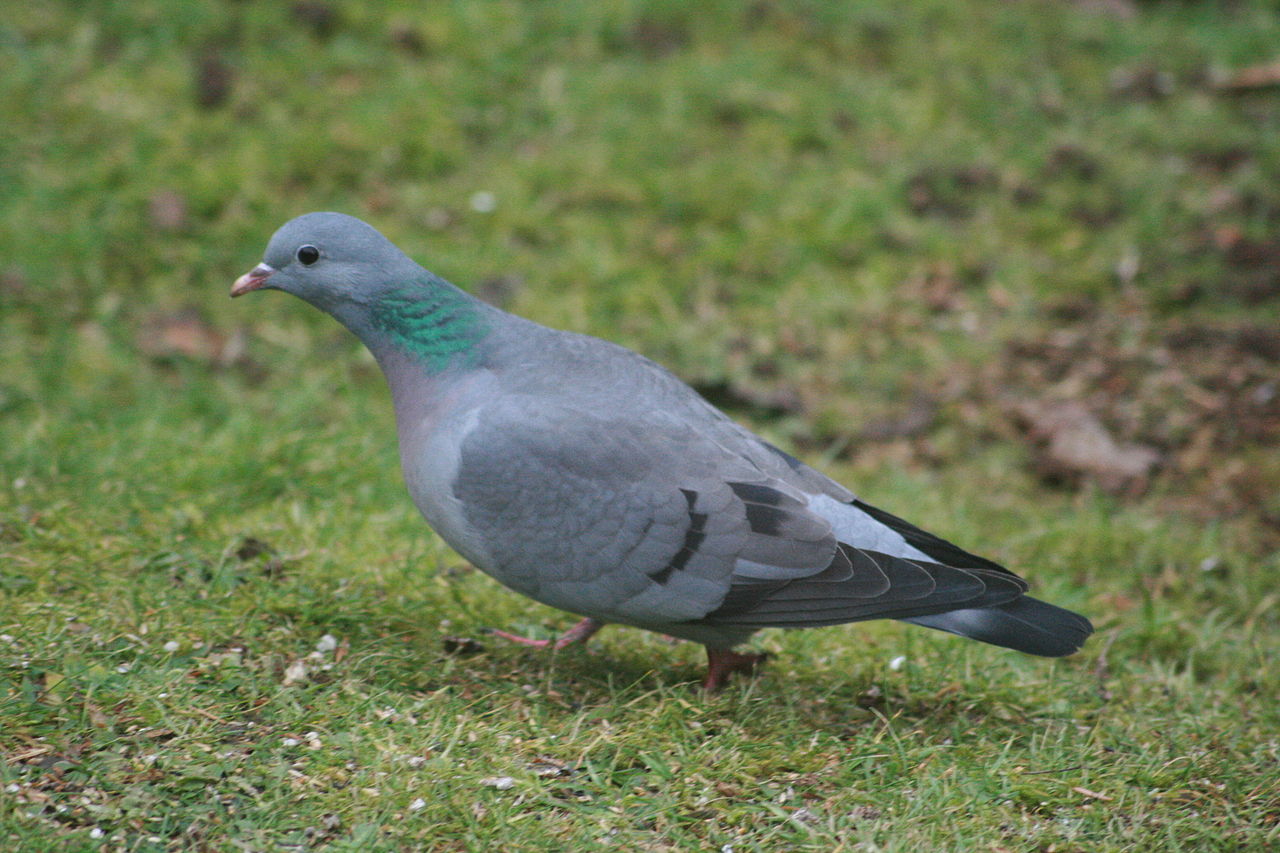Garden Wildlife
Garden Wildlife




Stock dove Columba oenas
The stock dove is not a common garden bird, and is recorded in about 7-8% of gardens. They are often overlooked because they can be confused with both woodpigeon and feral pigeon.
What do they look like?
Stock doves are about the same size as feral pigeons at 33 cm body length. They are most easily confused with a woodpigeon, but have a metallic green patch on their neck where a wood pigeon would have a broad white mark. They also have no white wing bars. Their chests are grey, and they have two unequal black bars on the wing. Unfortunately feral pigeons are so variable that some also display one or more of these characters. See our pigeons page to compare with other species.
What do they sound like?
A monotonous series of "ooo-ooe" paired notes, contrasting with the three-note pattern of the feral pigeon and five-note pattern of the woodpigeon. Males indulge in a good deal of noisy wing flapping when competing.
What do they eat?
Ground feeders like all pigeons, they eat leaves and vegetation, seeds, fruit and grains.
What do they do?
Stock doves are associated with woodland edges, parkland and large gardens in summer, and on arable and pasture land in the winter. Unusually, they are hole-nesters, generally in trees or even in deserted rabbit holes.
How are they doing?
There are estimated to be 320,000 summer territories in Britain. They seem to be increasing in numbers in Europe and in Britain from 2007, partly due to better recent breeding success.
Finding out more:
BTO profile on stock dove
RSPB profile on stock doves
Page written and compiled by Steve Head
Jarek Matusiak, XC628924. Accessible at www.xeno-canto.org/628924.
Stock dove Columba oenas
The stock dove is not a common garden bird, and is recorded in about 7-8% of gardens. They are often overlooked because they can be confused with both woodpigeon and feral pigeon.


What do they look like?
Stock doves are about the same size as feral pigeons at 33 cm body length. They are most easily confused with a woodpigeon, but have a metallic green patch on their neck where a wood pigeon would have a broad white mark. They also have no white wing bars. Their chests are grey, and they have two unequal black bars on the wing. Unfortunately feral pigeons are so variable that some also display one or more of these characters. See our pigeons page to compare with other species.
What do they sound like?
A monotonous series of "ooo-ooe" paired notes, contrasting with the three-note pattern of the feral pigeon and five-note pattern of the woodpigeon. Males indulge in a good deal of noisy wing flapping when competing.
What do they eat?
Ground feeders like all pigeons, they eat leaves and vegetation, seeds, fruit and grains.
What do they do?
Stock doves are associated with woodland edges, parkland and large gardens in summer, and on arable and pasture land in the winter. Unusually, they are hole-nesters, generally in trees or even in deserted rabbit holes.
How are they doing?
There are estimated to be 320,000 summer territories in Britain. They seem to be increasing in numbers in Europe and in Britain from 2007, partly due to better recent breeding success.
Finding out more:
Page written and compiled by Steve Head
























